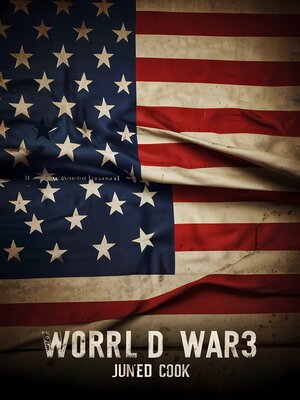
Sign up to save your library
With an OverDrive account, you can save your favorite libraries for at-a-glance information about availability. Find out more about OverDrive accounts.
Find this title in Libby, the library reading app by OverDrive.



Search for a digital library with this title
Title found at these libraries:
| Library Name | Distance |
|---|---|
| Loading... |
Synopsis
World War 3: The Great Divide
A World on the Brink
The 21st century began with hope for a future shaped by progress, innovation, and peace. However, the rapid growth of technology, the expansion of globalization, and the emergence of new economic powers began to destabilize the established global order. Over the decades, underlying tensions simmered under the surface, amplified by ideological divides, power struggles, and scarce resources. The ever-growing dependence on cyber infrastructure and the ease with which misinformation spread further fractured relationships between nations. Although world leaders continued to pay lip service to diplomacy and peace, many knew that these fragile agreements were bound to break.
As superpowers jockeyed for influence and strategic advantage, the balance of power became more precarious. Alliances, once forged in trust and shared interests, were beginning to crack. Political instability, civil unrest, and proxy wars ignited in the Middle East, Eastern Europe, and Asia. Military spending surged as countries bolstered their defense systems, while intelligence agencies engaged in covert operations to undermine their adversaries. It was clear to those who were watching that a full-scale war was not a matter of "if" but "when."
The Spark That Ignited the War
The war began not with a grand declaration but with a single, isolated act that would set the stage for global devastation. Whether it was the assassination of a key leader, the breach of an international treaty, or a military operation gone awry, the moment of escalation was swift and deadly. A calculated strike, whether a missile launch, a military incursion, or an assassination, triggered a chain reaction. National security frameworks collapsed almost instantly as countries responded with immediate military retaliation.
Within days, entire regions were plunged into chaos. The world divided sharply into two distinct blocs: the Western Alliance, led by the United States, NATO, and their Pacific allies; and the Eastern Bloc, led by Russia, China, and their strategic partners. But not all nations fit neatly into these alliances. Some, like India, Brazil, and Turkey, played a dangerous game of diplomacy, balancing their interests while others were swept into the maelstrom, their sovereignty compromised.
The War on Multiple Fronts
The war unfolded across multiple theaters of conflict, each as deadly and unpredictable as the last.
The European Theater:
Russia's aggressive military campaign to reclaim territories once lost to the Soviet Union set the stage for brutal confrontations in Eastern Europe. Poland, the Baltic States, and Ukraine became the first to feel the devastating weight of Russian might. Cyber warfare and electronic warfare devastated NATO defenses, as Russia launched sophisticated hacking campaigns to cripple military communications and disrupt logistics chains. With NATO's cohesion tested, the battle lines shifted westward, threatening to engulf France, Germany, and the rest of Western Europe.
The Pacific Conflict:
While Europe was embroiled in bloodshed, China seized the opportunity to expand its influence in Asia. Taiwan became the flashpoint of the Pacific conflict, as China launched a series of overwhelming military strikes to assert control. The United States and its allies in Japan, South Korea, and Australia scrambled to contain the Chinese aggression. Naval...







